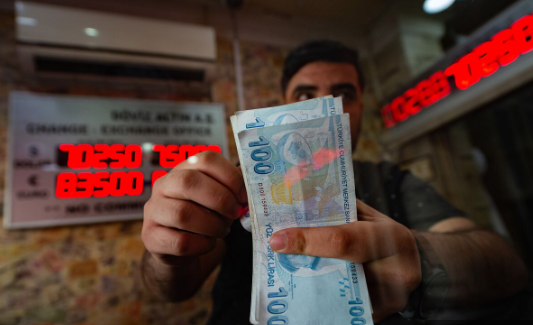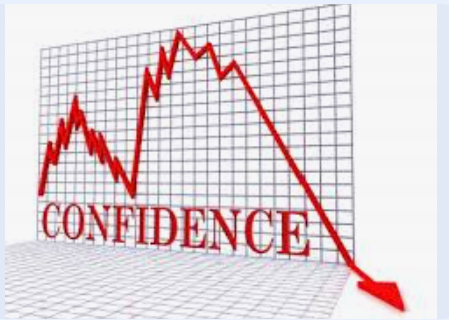The effect of wage increases, acceleration in loans and speculative FX demand was felt clearly in our trip last week. The CBRT responded by implementing restrictive macroprudentials that immediately increased deposit and loan rates, pushing credit conditions deeper into a restrictive zone. We believe that recent pessimism is fuelled by temporary acceleration in credit growth as well as concerns about FX depreciation after elections, like last year. However, policies this year are very different and credit conditions are tighter. We don’t see a sudden increase in the FX after the local elections and we think that recent increase in local demand for FX based assets is temporary.
Domestic demand is resilient but not as strong as last year
[embed]https://www.youtube.com/watch?v=DZPeXn_qwq0&list=RDCMUCKpFJB4GFiNkhmpVZQ_d9Rg&start_radio=1[/embed]
Real sector feedback on our trip suggested that domestic demand is not as strong as last year in 2Q but continues to be resilient. Increase in wages and banks’ appetite to grow their loan book seem to have caused a revival since start of the year. 13-week moving average annualized consumer loan growth accelerated from 10% in October to 30% as of 1 March, card spending in first two months exceeded last quarter growth and total local currency loans accelerated from a low of 29% to 40%.
However, when compared to current inflation and inflation expectations, loan growth implies slight contraction in real terms and when compared to last year’s highs of 100% in consumer loans and 109% in total local currency loans, it is quite weak. Card spending yoy is high c. 125% but qoq increase is in-line with inflation. Most of the yearly increase is due to the large base effect in 2Q last year where card spending increased 32% vs. quarterly inflation of about 6.4%. We think that the acceleration in demand from 4Q is mostly temporary, driven by wage increases and loan growth.
CBRT moved to prevent pre-election speculative demand
Real sector representatives and banks we spoke to believe that durable goods and FX based asset demand is in-part due to expectations of devaluation in the currency after the elections. Following the February inflation print, which was slightly above that of CBRT inflation forecast path, we have seen an increase in speculative FX demand both from retail and corporates. CBRT net reserves excluding swaps decreased $10bn since start of the year until beginning of March but net asset position excluding swaps decreased by $6bn alone last week.
[embed]https://www.youtube.com/watch?v=BksOC1IL58c[/embed]
In response, the CBRT decreased loan growth caps of commercial and consumer loans from 2.5% and 3% mom to 2% mom each, respectively. For banks who exceed the caps, now there is a reserve requirement of 100% with one year maturity at zero interest rate.
This bold step has immediately pushed commercial rates from 45-50% to over 60% and caused a 3-5% increase in TRY deposit rates. In light of the feedback from banks in our fieldtrip, we think that this move will significantly reduce loan growth unless it is eased after the elections. It will also help reduce speculative demand from local corporates who were borrowing TRY to increase their FX positions before the local elections.
CBRT only recently was able to get hold of TRY liquidity
Since last summer, banking system has been awash with TRY liquidity despite multiple increases in the reserve requirements by the CBRT. One of the reasons, we believe, was the increase in swaps by the banks to take advantage of longer maturities at lower costs during the hiking cycle. FX-protected accounts and reserve building strategy also contributed. Only after January when the CBRT announced an end to their hiking cycle this trend changed. The CBRT has also stated that they intend to reduce swaps since start of the year.
By end of January, we were estimating the average swap funding cost at c. 39.5% while policy rate was 45%. We see the swap funding cost catching up with the policy rate by end of March, taking at least two months from the last rate hike.
Hence, although hikes stopped, funding cost of the banking sector continued to increase. In addition, excess TRY liquidity in the system used to be sterilized by quotation at the lower band of the interest rate corridor which is 150bp lower than the policy rate. The CBRT started to use depo auctions for sterilization which helped increase the sterilization rate to policy rate or above, pushing the TLREF closer to the policy rate.
Only recently, net OMO funding turned positive and we see that TLREF have remained close to the upper band more persistently. In other words, the CBRT’s 45% policy rate started to become more effective and liquidity conditions continued to tighten since the CBRT stopped hiking.
Conditions are already tighter; will it be enough or do we need more hikes?
All data suggest that things are moving in the right direction. We think that credit conditions, especially following the macroprudentials last week, are very tight and it will start to show its effect on demand very quickly. The current account and gold & energy excluded trade deficit are correcting every month at a fast pace and we expect more correction in 2Q and over the summer.
Hence, we believe the pessimism in 1Q is mostly due to temporary effects and by the end of 2Q, we expect both locals and foreign investors to turn more bullish. That said, macroprudentials are still at the forefront of policy making, swaps and FX-protected accounts are sizable and reserves are limited.
We think that further hikes in the policy rate would help manage inflation expectations better than macroprudentials and help increase credibility and confidence in the central bank. If the CBRT hikes in March or April, we think that capital inflows can restart in 2Q.
If it chooses to remain tight with unorthodox measures until inflation starts to ease, then investors will likely wait for data to prove the CBRT right before they turn more positive, which will likely happen in summer. Whatever way the CBRT chooses, we think there is room for optimism this year for Türkiye assets in the second half of the year.
We now see a 300-500bp hike as possible in April, although not our baseline yet and we believe it will depend on March inflation data
We see inflation at 42% now (from 40%). We don’t expect any change in the economy management after the local elections. We also do not expect any tax hikes or price adjustments that would be inflationary. We see it more likely that effective tax collection and cuts to spending would be preferred over inflationary measures. We see budget deficit at 5% this year and expect earthquake related spending that accrued last December to unfold slowly over the year. Issuance over the $10bn target on the external side is also possible if market conditions are adequate in 2H.
Follow our English language YouTube videos @ REAL TURKEY:
https://www.youtube.com/channel/UCKpFJB4GFiNkhmpVZQ_d9Rg
And content at Twitter: @AtillaEng
Facebook: Real Turkey Channel:
https://www.facebook.com/realturkeychannel/
 optimism
optimism





